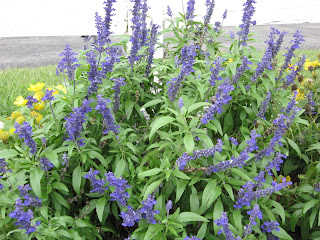 Rose Care
Rose Care Now that we are in the midst of summer heat and humidity, there are a few helpful tips that will pull your roses through to fall with flying colors. As you probably know, roses really prefer cool, low humidity areas to show off their best form. You've noticed, I'm sure, how beautiful, vibrant and prolific the blooms are in the spring, but as soon as the temperatures rise to high 80's and 90's, fewer and smaller, and sometimes faded or different color blooms appear. Blackspot and mildew begin to creep onto the lower leaves, turning them yellow and causing the plant to begin to defoliate.
There are several proactive steps you can take to prevent, or if it's already started, to arrest the process. First and foremost is to make sure your bushes are not crowded and are getting plenty of circulation around their bases. Second and just as important is to make sure your roses are well watered and fed regularly, being careful not to get the foliage wet. A robust healthy rose bush is less apt to succumb to disease and insects if taken care of. Third, a regular regimen of spraying with a fungicide once the weather gets hot and humid will go a long way toward keeping fungi under control. If the blackspot doesn't have a chance to get started, you won't have to spend as much time fighting it off.
If you do have the start of blackspot, be sure to clean all the dead and dying leaves from on and around your bushes and place them in the trash not in your compost. Fungal spores can live for years before they reinfect plants, so remove them permanently. After you have cleaned on and around your plants, wait until late in the evening just before sunset to spray your fungicide so you don't burn the foliage. As long as it doesn't rain, you won't have to spray again for two or three weeks. A continuous program of spray throughout the summer, however, will assure your plants of being healthy going into the fall and winter. (Knock Out Roses seem to withstand most fungal problems, but have been known to get mildew, another fungal disease.)
Don't forget, roses need at least 2" of rain a week, so about twice a week water them well if it hasn't rained much, and they will reward you with a summer and fall of continuous gorgeous blooms!
By: Sandy Weinkam
A.J. Rahn Greenhouses



























